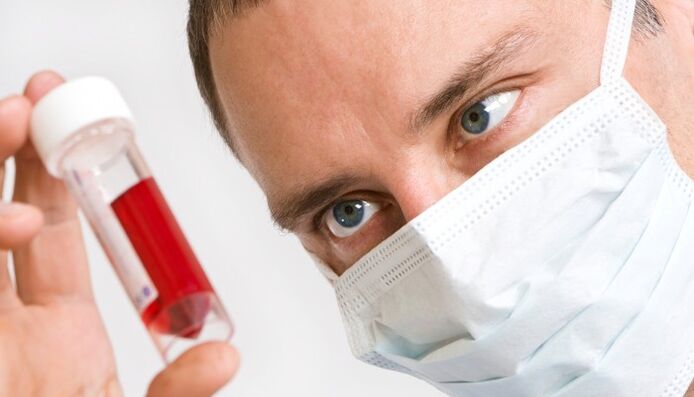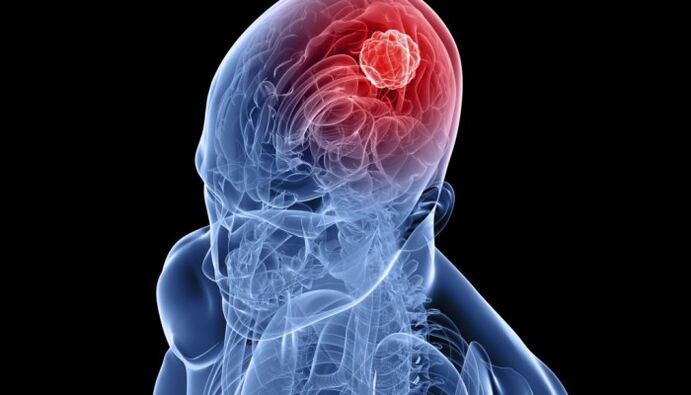When an unpleasant sensation arises in a particular area, this is of course a cause of trouble for the patient, but pain throughout the body brings more suffering. In this case, even daily activities fade into the background, as it becomes difficult to do.
Many people are accustomed to feelings of weakness, fatigue and pain that interfere with an active life. Similarly, common pain in muscles, bones or joints should not be ignored. He must force the patient to make a quick decision to find out the cause and essence of the next step. But for this you need to see a doctor first.
cause
If the muscles and joints of the whole body are sore, then it is necessary first to find out what is connected with it.
Such broad zones of sensation are obliged to prompt patients and physicians to the idea of systemic lesions. One must look for the cause not in the individual tissues of the musculoskeletal system, but in the functioning of the whole organism and its system. At the same time, it is quite difficult to understand what actually hurts: muscles, bones or joints. Such sensations spread throughout the body and do not have precise localization. But, despite this, there are states in which the same situation is quite typical. These include the following:
- Physical stress.
- Contagious disease.
- Connective tissue pathology.
- Blood diseases.
- Tumor process.
- Neurological disorders.
As you can see, the pathology is quite diverse and serious. If you do not take into account the full physiological reasons for muscle weakness and pain in them, then you need to be careful about the possibility of this disease. Consulting a doctor is never excessive.
It is possible to make assumptions about the origin of pain in the joints and muscles of the whole body after a clinical examination by a doctor.
symptoms

Any pathology has characteristic features. All manifestations should be considered, even if they are not essential. To identify diseases that affect the condition of muscles and joints, it is necessary to analyze patient complaints and symptoms objectively.
Since pain is the most common symptom, features that may need to be considered:
- Sick, burning, sliced or stabbed.
- It is localized in areas of muscles, bones or joints.
- Feels in the same or erratic body part.
- Permanent or periodic.
- Simple, strong or weak.
It may be accompanied by feelings of weakness, fatigue, or pain. If the cause of the pain lies in a general disease of the body, then other symptoms will inevitably be present, which will indicate the source of the problem.
Physical stress

For starters, you should exclude situations that almost everyone can face. Excessive physical activity can cause muscle tension, which affects the sensation in different parts of the body. Pain and weakness are associated with accumulation of lactic acid in tissues and micro damage to fibers. Because of this, a sore throat develops, which passes over time. It should be noted that only muscles are involved in the process and there should be no other symptoms.
If physical overstrain is excluded, then you need to look for a more serious cause of pain.
Contagious disease

Bone and muscle pain is common to anyone who has ever had a respiratory infection. Even superficial ARI is accompanied by such symptoms. What can we say about more serious pathologies, such as influenza, meningitis, dengue fever, leptospirosis, Lyme disease. Flying pain is a hallmark of brucellosis and epidemics of myalgia. In many cases, such sensations are the result of microbial intoxication. Infectious diseases are accompanied by other symptoms:
- Fever.
- Cough, sneeze.
- Rash.
- Nausea, diarrhea.
- Headache.
- General weakness.
Joint pain can even bother patients with liver damage - viral hepatitis. In this case, severity in the right hypochondrium, yellowing of the skin, and decreased appetite are characteristic. we must not forget about the possibility of parasitic invasion, for example, trichinosis, in which muscle pain is of great diagnostic value.
The spectrum of infectious pathology is very wide, so it is necessary to identify the cause of pain in the body in a timely manner.
Connective tissue pathology

If the muscles and joints are sore, then the patient must be examined to identify systemic diseases: lupus erythematosus, polymyositis, scleroderma, rheumatoid arthritis. They have autoimmune properties and occur with damage to connective tissue, which is found in all body systems. In this case, you should pay attention to the following features:
- Symmetrical damage to the joints of the hands with characteristic defects - in rheumatoid arthritis.
- Redness of the skin in the form of butterflies - with lupus erythematosus.
- Weakness of the muscles of the limbs and neck - with polymositis.
- Thickening of the skin on the fingers, face like a mask - with scleroderma.
Another disease with systemic manifestations should be mentioned - rheumatism. Although microbial agents (streptococci) are a triggering factor, autoimmune processes develop in the future. It is for this disease that flying pain in the joints will be characteristic.
Connective tissue disease is accompanied by damage to internal organs: heart, lungs, kidneys, as well as blood vessels and nervous system.
Blood diseases

Diseases of the hematopoietic system are a common cause of bone pain. Unfortunately, most of them are malignant, so it is useful for everyone to know the signs of such pathological features. In addition to body aches, the following symptoms develop with leukemia:
- Increased temperature.
- Swollen lymph nodes.
- Bleeding of various localizations.
- Pale skin.
- Enlargement of the spleen and liver.
- Tendency to infection.
In addition, shortness of breath, general weakness, loss of appetite, nodules on the skin may interfere. The acute form of leukemia occurs with obvious manifestations and has a serious danger to life if there is no adequate treatment.
Tumor process

Pain in areas of bones, joints or muscles of the whole body can appear in the structure of paraneoplastic syndrome, which is characteristic of various malignant tumors. It develops due to metabolic, immune and other disorders associated with key processes. Often observed arthro- or osteopathy, similar to various rheumatological diseases. Similar signs appear long before the tumor process is detected.
In addition, bone pain may be due to the "cancer intoxication" observed in patients with tumors and advanced metastases. In addition to the symptoms shown, general disturbances will occur in the clinical picture of the disease:
- A big drawback.
- Skinny, until fatigue (cachexia).
- Lack of appetite, nausea.
- Pale skin with gray, icy or bluish color.
- Fever.
- Depression, irritability.
Such symptoms significantly worsen the patient's condition and adversely affect the prognosis of the disease.
It is necessary to pay more attention to detect tumors at an early stage, which is possible only with regular preventive examination.
Neurological disorders

If the patient feels sore muscles, joints or bones, then the problem may lie with the nervous system. Often, similar symptoms are observed with polyneuropathy. The disease can have different localizations, but the lower part of the foot is most susceptible to it. In such cases, the following symptoms are observed:
- Numbness, tingling, burning, crawling "goose bumps".
- Decreased sensitivity.
- Changes in reflex severity.
- Muscle weakness, hypotrophy.
- Thinning skin, hair loss, dryness.
Polyneuropathy can cause severe pain that has a significant impact on a patient’s quality of life.
Diagnostics

After clinical examination, it is necessary to use additional methods that will help establish the correct diagnosis. Given the wide range of pathological possibilities, physicians require a variety of laboratory and instrumental tools. These include the following:
- General analysis of blood and urine.
- Biochemical blood tests (infectious antigens, rheumatic tests, tumor markers, acute phase indicators, liver function tests, etc. ).
- Bacteriological analysis of blood and body secretions.
- Bone marrow puncture.
- Computerized and magnetic resonance imaging.
- Neuromyography.
It is necessary to consult with rheumatologists, infectious disease specialists, oncologists, hematologists and neuropathologists.
It is possible to draw final conclusions about the origin of pain in the bones or muscles based on the results of a thorough examination.
Treatment
After the diagnosis is established, the next steps are determined by the doctor. Therapeutic tactics will depend on the type of disease, its prevalence and the condition of the patient’s body. It is difficult to formulate a general therapy program for all diseases that may be accompanied by pain or soreness in the joints, muscles and bones. It all depends on the specific circumstances, which determine the use of conservative techniques or operations.
Drug therapy

The main treatment for most diseases is the use of medications. It’s hard to imagine modern medicine without them. Different types of drugs allow you to influence almost all mechanisms of pathological development and its causes. With the advent of certain medications, it has become easier to treat serious illnesses.
Depending on the established diagnosis and clinical condition, the following medications can be used for pain throughout the body:
- Antibiotics and antiparasites.
- Non-steroidal anti-inflammatory.
- Hormones (glucocorticoids).
- Cytostatics and immunosuppressants.
- Detoxification.
Many drugs have serious contraindications for neoplastic disease. This applies to vitamins and metabolic agents. Its use can enhance the development of pathological processes. Of course, the treatment complex may include additional medications that will affect the individual symptoms of the disease.
Medications must comply with generally accepted therapeutic standards and must be prescribed only by a physician.
Surgical treatment

Surgery may be indicated for tumors or blood disorders. In the first case, the pathological focus is removed along with the regional lymph nodes. Given the nature of the disease, the appointment of subsequent radiation therapy is possible. With progressive leukemia against the background of conservative treatment, bone marrow transplantation is recommended.
Pain in the musculoskeletal and articular systems, covering almost the entire body, can be a cause of serious concern. Early diagnosis and proactive treatment will help prevent complications and improve the prognosis for any disease.



































